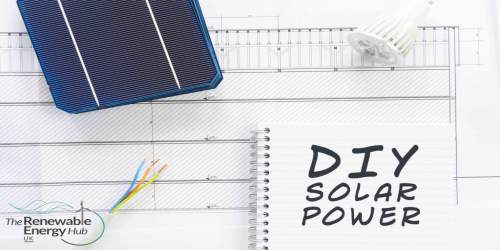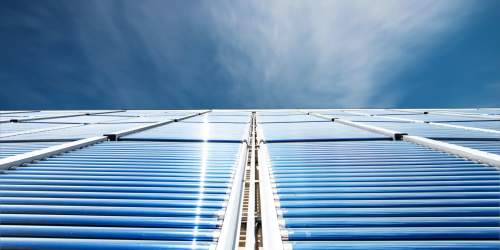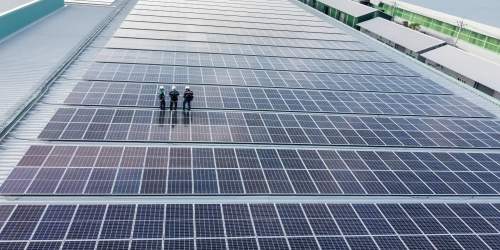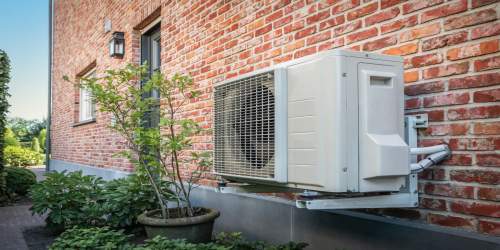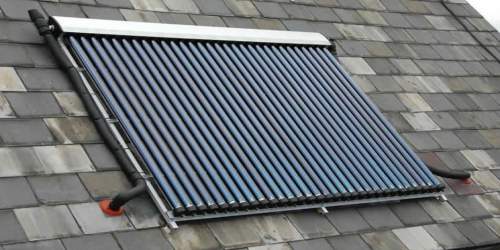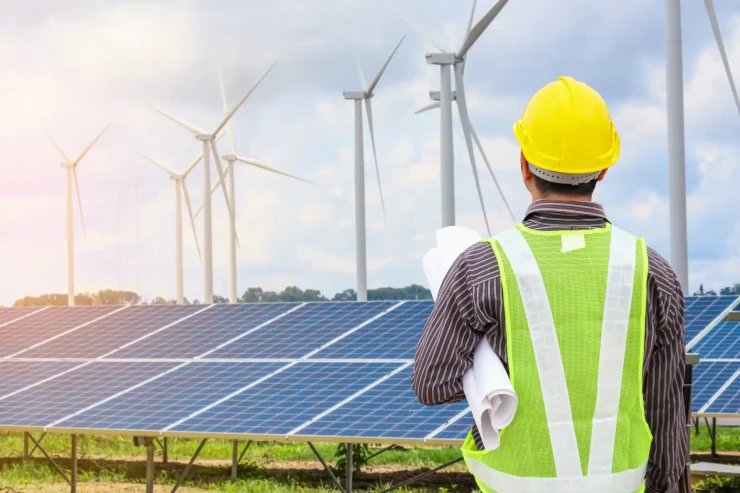
When it comes to making our homes more sustainable, we often focus intently on the interior – upgrading appliances, improving insulation, and choosing eco-friendly décor. However, the exterior areas of a home are frequently overlooked in sustainability efforts. This is a missed opportunity. Embracing green practices in all aspects of home ownership can have a significant positive impact on the environment.
Here, we’ll explore the reasons why exterior spaces are often neglected in sustainability discussions, and provide actionable tips for creating a greener, more environmentally friendly property – inside and out.
COMPARE PRICES FROM LOCAL INSTALLERS
Compare prices from local companies fast & free
Enter your postcode to compare quotes from leading professionals. We promise to keep your information Safe & Secure. Privacy Policy
Why exterior spaces are overlooked
There are a few key reasons for the oversight when it comes to sustainable homes. First, the main emphasis tends to be on optimising energy efficiency and aesthetics within the home itself. Homeowners are naturally drawn to upgrading appliances, improving insulation, and choosing sustainable interior design elements, but the outdoor areas of the property can sometimes take a backseat in these considerations.
Additionally, there is often a lack of awareness about the various sustainability options available for the exterior of the home. Many homeowners may simply not realise the breadth of eco-friendly upgrades that can be made, such as installing insulated garage doors, for example, or implementing water conservation measures. From renewable energy sources to water-wise landscaping, the possibilities for greening the exterior are vast, but not always top-of-mind.
Finally, there’s a perception that upgrading the sustainability of exterior areas requires significant extra cost or effort compared to interior projects. While some eco-friendly enhancements do require an initial investment, there are also many budget-friendly, easy-to-implement solutions. Overcoming this mental barrier is an important step in embracing a whole-home approach to sustainability.
Benefits of greening the garage
Embracing sustainability in the garage offers a multitude of benefits that extend well beyond just environmental considerations. Perhaps the most obvious advantage is being able to reduce your carbon footprint. By incorporating renewable energy sources, water conservation systems and other green features into the garage, homeowners can dramatically decrease their carbon emissions and resource consumption. This not only benefits the planet, but also aligns with a growing societal emphasis on sustainable living.
In addition to the environmental upsides, greening the garage can also increase a home's value and kerb appeal. Prospective buyers are increasingly seeking out properties with demonstrated eco-consciousness, making sustainability-focused upgrades a wise investment. Furthermore, an attractive, well-maintained garage can enhance the overall aesthetic appeal of a home, further boosting its market value.
Beyond financial considerations, a greener garage also contributes to a healthier, more enjoyable outdoor living space. Features like eco-friendly landscaping, efficient lighting and improved insulation can create a more comfortable, inviting environment for activities, hobbies, and quality time spent in the garage. No matter what you use your garage for, optimising it for warmth and comfort will reduce utility costs and keep this space more functional.
The benefits of greening the garage are multifaceted, encompassing environmental, financial, and practical advantages. For homeowners seeking to adopt a more holistic approach to sustainable living, the garage presents a prime opportunity to make a meaningful difference.
Garage sustainability strategies
When it comes to transforming the garage into a more eco-friendly space, there are several key strategies homeowners can implement.
Add an EV charger
One popular option to make a garage eco-friendly is to install an electric vehicle (EV) charging station. As the adoption of electric vehicles continues to rise, having a dedicated charging point in the garage can not only help to reduce carbon emissions, but also increase a home's appeal to environmentally conscious buyers should you sell up in the future.
Utilise roof space for renewables
Another impactful sustainability upgrade for the garage is the installation of solar panels. By harnessing the power of renewable energy, homeowners can offset their reliance on the grid and drastically lower their energy costs, plus it makes great use of valuable roof space if your garage is an extension to your property. Solar panels can be seamlessly integrated into the garage roofing or mounted on the exterior walls, providing a clean, efficient source of power.
Conserve water
Property owners can also explore a rainwater harvesting system for their garage to utilise the water run-off from guttering. By capturing and storing rainwater, this system can supply water for tasks like car washing, gardening, and other outdoor chores, so you don’t need to waste tap water. Not only does this reduce the demand for municipal water supplies, but it also saves homeowners money on their utility bills.
Insulate connecting walls
Many garages are connected to the main house, which means they’re a prime opportunity for heat loss. Insulating the garage, including the door and sealing draught spots such as around windows, can help to keep heat in and prevent the need for external heat sources in the winter, or fans in the summer.
Implement surrounding landscaping
When it comes to the physical structure of the garage, eco-friendly landscaping, and building materials can make a significant difference. Native, drought-tolerant plants, permeable paving, and recycled or sustainable construction materials all contribute to a greener, more environmentally responsible garage.
Minimise waste with recycling
Finally, homeowners should consider implementing robust waste reduction and recycling initiatives within the garage. This might include dedicated sorting stations, composting systems, and the use of reusable storage containers. Garages are often areas of the home where we accumulate rubbish and waste materials we no longer need or don’t know what to do with. But minimising the amount of waste generated in this space, and sorting it appropriately so it can be recycled in the future, can help you to maintain your commitment to sustainability.
Each of these garage sustainability strategies offers unique benefits and can be tailored to the specific needs and preferences of the homeowner. By combining multiple approaches, homeowners can transform their garages into shining examples of eco-consciousness.
As homeowners continue to prioritise sustainability and eco-friendly living, it's essential that they look beyond the interior of the home and consider the impact of their exterior spaces as well. The garage, in particular, presents a prime opportunity for homeowners to embrace green practices and reduce their overall environmental footprint.
By acknowledging the common reasons why exteriors are often overlooked in sustainability efforts, such as a focus on interior design and a lack of awareness about outdoor upgrades, homeowners can make a concerted effort to address this oversight. Recognising the multitude of benefits that come with greening the garage, from reduced environmental impact to increased home value, can serve as powerful motivation.
Find a local installer
Welcome to the biggest directory of UK renewable energy companies


